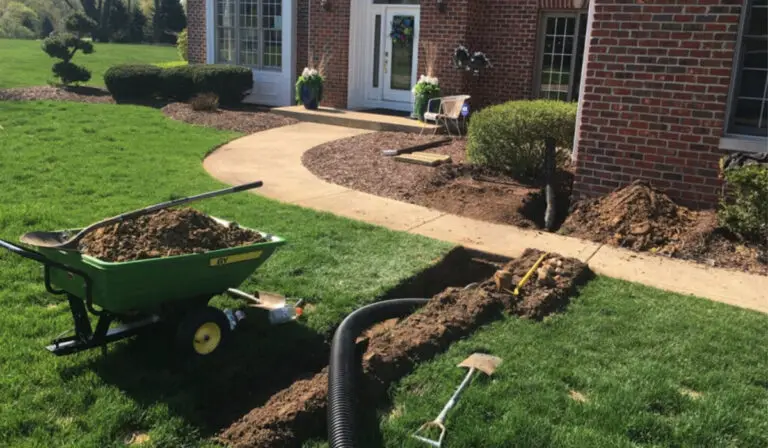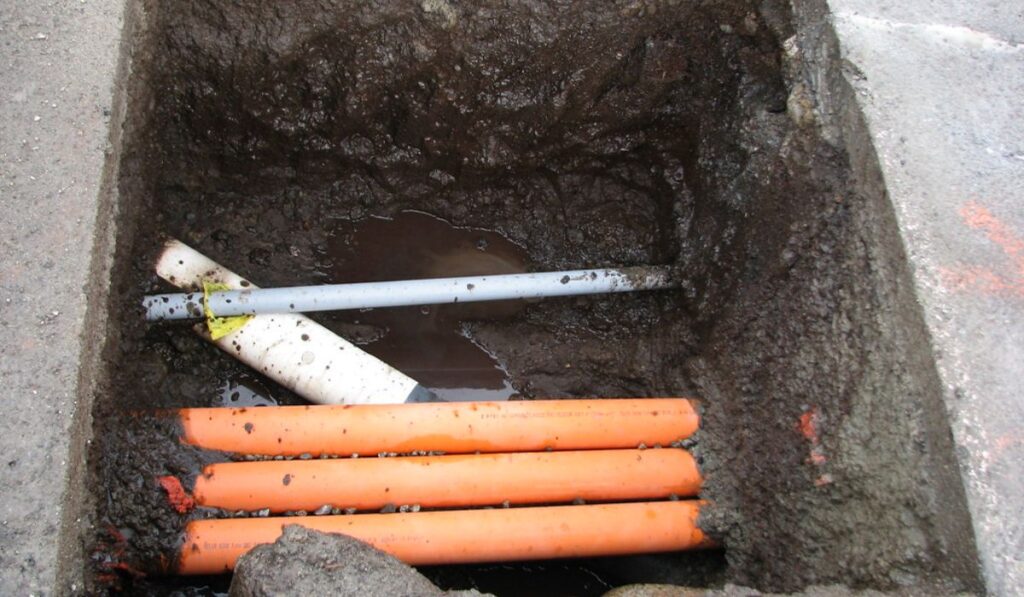Essential Guide To Installing Underground Drainage Systems For Homeowners
Purchasing a home is one of life’s monumental decisions, and ensuring every corner of that property, from foundation to rooftop, meets your criteria is paramount. Considering a robust underground drainage system is essential as you prioritize key home features. Gutter Medics, a leader in drainage solutions, is your ally in this journey. From insights into our services to understanding where we operate through our service areas, we aim to equip you with the knowledge you need.
And while our media offers a visual perspective of our expertise, the candid feedback from clients in our reviews echoes our commitment. Our FAQs section is designed to answer them. Call us at (630) 922-3131 to schedule an estimate, and we’ll guide you step by step.
Understand Home’s Underground Drainage Systems
It’s not merely about pipes and water flow; it’s about safeguarding your home’s longevity and ensuring a comfortable living environment. Here’s what every homeowner should know.
•Understanding The Terrain
Before diving into any drainage-related project, familiarize yourself with your property’s layout. Recognize areas where water pools or where the ground feels consistently wet. The lay of the land plays a pivotal role in determining how water naturally moves and where drainage might be needed.
•Identify Existing Systems
If your property had a previous owner, there’s a chance some drainage infrastructure is already in place. Inspect your home for signs of gutters, downspouts, or even underground systems. Knowing what’s already there can save both time and money.
•Water Sources
It’s crucial to pinpoint where the water on your property is coming from. Are there natural springs nearby? Does your property slope downwards from the road, catching runoff? Understanding these sources helps in designing an effective solution.
•Soil Composition
The type of soil in your yard plays a significant role in drainage. Sandy soils tend to drain faster than clay-heavy soils. A simple soil test can provide insights into its composition, guiding you on whether you need to adjust for better water movement.
•Look Beyond Rain
While rainwater is the primary contributor to potential drainage issues, it’s not the sole culprit. Consider other sources like sprinkler systems, household wastewater, or neighboring properties. It’s about seeing the broader picture and designing systems that tackle all potential water sources.
•Safety First
If you suspect you have an underground drainage system, always check with local utility companies before digging. Striking a utility line can be dangerous and costly.
A proactive approach prevents costly repairs and ensures that your home remains a haven, unaffected by the adverse effects of unchecked water flow. You’re taking pivotal steps towards a safe, comfortable, and sustainable living environment by staying informed and taking action where necessary.
Optimizing Trench Design In Underground Drainage Systems
An expertly designed trench can dramatically reduce standing water, safeguarding your home’s foundation and landscaping. If you’re pondering the creation of such a trench, here’s a strategic blueprint to guide you:
•Assess And Plan
Before you pick up a shovel, start with a comprehensive property assessment. Highlight zones prone to water accumulation. Design a trench route that effectively channels water away from these problem areas from here.
•Trench Depth And Width
For optimal efficiency, aim for a trench that’s approximately 18 inches deep and 6 inches wide. This depth allows water to flow naturally, while the width ensures a manageable flow rate, reducing erosion risks.
•Choose The Right Tools
A spade shovel with a square edge is ideal for achieving uniform trench dimensions. A pickaxe might come in handy for areas with dense roots or hard soil.
•Incorporate Gravel
Once you’ve excavated, fill the bottom of your trench with roughly 2-3 inches of coarse gravel. This facilitates proper water flow and acts as a first-line filter, minimizing debris entry.
•Install A Drain Pipe
Opt for perforated drain pipes, which collect and direct water more efficiently. Make sure the holes face downwards, enhancing the system’s efficiency by tapping into gravity’s natural pull.
•Finish With A Filter Fabric
This is an often-overlooked step, but it’s crucial. Lay a permeable filter fabric over your pipe, then cover it with more gravel. This fabric acts as a barrier, preventing soil from entering the trench and allowing water to flow through.
As you prioritize your home’s protection, remember that a well-crafted trench serves as both a defense and a channel, guiding water away while preserving the integrity of your property.
•Pipe Preparation For Effective Underground Drainage Systems
Establishing a robust and efficient drainage system demands meticulous attention, especially during the critical phase of pipe preparation and installation. Here’s a step-by-step guide to help you lay the groundwork for an effective underground solution.
•Material Selection
Not all pipes are created equal. Opt for PVC or corrugated plastic pipes. Both are durable, corrosion-resistant and can handle significant water flow, making them ideal for underground use.
•Pipe Size Matters
Depending on the expected water flow, choose the right diameter. Commonly, residential properties use 4 inches in diameter pipes, providing a good balance between flow capacity and ease of installation.
•Inspect The Pipes
Before burying anything, inspect your pipes for any damage or imperfections. Tiny cracks or holes can escalate into bigger problems once they’re in the ground.
•Slope Determination
One of the fundamental principles of drainage is allowing gravity to do most of the work. Ensure a slope of at least 1-2% (a drop of one to two feet for every hundred feet). This gradient ensures water flows smoothly through your system without stagnating.
•Trench Preparation
The trench should be slightly wider than the pipe, allowing for adjustments. Ensure the trench bottom is smooth to prevent unwanted undulations or disruptions in your pipe’s gradient.
•Pipe Placement
Lay the pipe with utmost precision. Ensure all joints are securely connected. For added protection, wrap the pipes in filter fabric. This serves a dual purpose: it deters sediment build-up inside the pipes and enhances their lifespan by protecting against root intrusions or soil pressure.
•Test Before Burying
Once installed, pour water into the system to test the flow. It’s much simpler to adjust at this stage than after the pipes are covered.
•Backfilling
Once you’re satisfied, begin the backfilling process using the excavated soil. Tamp down gently to avoid any pipe displacement. For added filtration and to reduce soil penetration, consider adding a layer of gravel atop the pipes before covering it with soil.
•Regular Maintenance
Over time, even the best-installed systems may need help with issues. Periodic checks, especially after heavy rains, are vital. These checks ensure optimal functionality and can identify potential issues before they become significant problems.

Underground Drainage Systems: Trench Care After Installation
Completing the pipe installation for an underground drainage system is just one part of the equation. The steps you take immediately after, particularly in trench filling and subsequent care, play a significant role in the system’s durability and functionality. Here’s a clear-cut guide to ensuring your drainage system remains resilient for years.
•Material Choice For Filling
While using the soil you initially dug up might be tempting, consider mixing it with gravel. Gravel facilitates better water flow, reducing the chances of water pooling around the pipes and causing potential damage.
•Tamping Down
After backfilling, compact the soil to remove air pockets. This provides a firm base, reducing the chances of ground sinkage later. Consistency is crucial; avoid over-compacting, which might exert undue pressure on the pipes.
•Grass Restoration
Restoring the landscape after your drainage installation can offer more than aesthetic value. Planting grass or ground cover plants can help prevent soil erosion, especially during heavy rains. Their root systems further stabilize the ground.
•Regular Inspection
Ensure an annual check-up of your drainage system. Though underground, signs on the surface, like water pooling or soil sinking, can hint at issues below.
•Clean Outs
Over time, even the most proficient systems can accumulate debris. Setting up clean-out points during installation can ease this process. Regularly flushing the system with water can help maintain its efficiency.
•Be Watchful Of Trees And Shrubs
Nature’s giants, trees, and larger shrubs search for water sources through their roots. These roots can infiltrate and damage pipes. It’s wise to ensure a safe distance between your system and any large plants.
•Avoid Heavy Loads
The area atop your drainage system should be kept free from excessive weight. Avoid parking vehicles or placing heavy equipment over them, as the added pressure can compromise the pipes’ integrity.
•Awareness And Education
Inform family members and neighbors about the underground system. This collective awareness can prevent potential disruptions, like digging without prior knowledge.
While installing an underground drainage system requires diligence, the post-installation phase is equally pivotal. By ensuring a well-filled trench and adopting a regimen of regular care, homeowners can enjoy a hassle-free drainage solution for years.
Homeowners' Underground Drainage Systems Installation Guide
A well-planned and installed underground drainage systems is a boon for any homeowner. It safeguards the property from water damage, reduces maintenance costs in the long run, and ensures a healthier living environment. As with any home project, thorough research, careful planning, and regular maintenance are key to ensuring your drainage system remains robust and effective for years.
Here at Gutter Medics, we pride ourselves on offering tailored services across various service areas to suit your needs. Get a closer look at our work through our media and understand our client’s trust in us by perusing our reviews. If questions linger, our FAQs might just have the answers. Whether you want to chat or schedule an estimate, dial (630) 922-3131 now and our expert team is here to assist.

